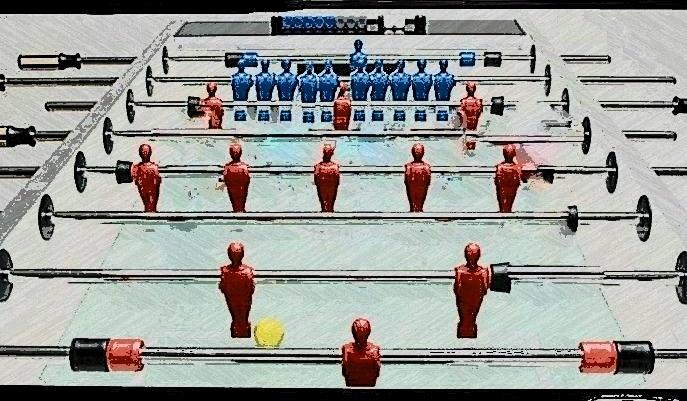
Total Football Journeyman: Breaking The Parked Bus in FM22
There are two things in Football Manager that can pose a challenge to even the most seasoned FM players. They are 1) setting up a low block tactic that’s actually successful, and 2) breaking an opponent’s low block, aka “parked bus”. Realistically, these two tactical concepts are also not easy to execute in real life. Very few teams can actually pull off a good parked bus against superior opposition. Facing a parked bus is similarly dreaded by real-life managers. Experience has showed that even the most technical attacking team can grind to a halt against a well-executed parked bus. Some managers, like Jose Mourinho, have even made their whole career of perfecting the art of low block football. Pragmatic Football if you’re Mourinho fan. Consequently, this article aims to examine the theory behind setting up a low block in order to understand how to break down such ultra-defensive system.
The key to breaking down “Parked Bus” low block is in creating space. And this can in turn be achieved through using width and creativity. A number of formations, such as a 4-2-3-1 and 4-3-3, are good options for bus breaking tactics. But in the end, it is not so much the formation but the roles and the movement of the players that makes the biggest impact. In both above-mentioned formations you have creative attacking midfielders attacking through the middle of the field. In 4-2-3-1 you could have up to three attacking midfielders overloading the centre of the pitch. While in 4-3-3, two inside forwards cut inside into the central space. And both formations employ wingbacks to bomb forward and provide width. But irrespective of the formation, what really matters is how you employ your creative players to create width against a low block.
Parked Bus – What is it?
But first a quick look at what defines a “parked bus”. The oldest trick in the tactics book is that in order to defeat them you need to know them. How does one “park the bus” exactly?
As we already established, a parked bus tactical system is foremost a low block system. That is, it’s a defensive tactic where players defend very deep in their own half. At the same time, they restrict space for their opponents to exploit. Unlike the much more proactive, high-pressing defending of Gegenpress, there isn’t much movement from a team playing a low block. It’s a very static form of defence. Not that this makes it an inferior tactic. To the contrary, low block can be an effective strategy. It’s good at what it aims at. And that is obstructing opposition offence by overloading the key central areas, getting the ball back and counter-attacking quickly when it’s safe to do so. Managers using low block tactics don’t care about maintaining possession or pressing high up the field. They just don’t want to concede any goals, even if that means not scoring any.
What all parked buses have in common is the propensity for two banks of four. Therefore, the 4-4-2 and 4-1-4-1 are the most common formation for such a defensive approach. These two formations allow a good base for defensive stability. Another advantage is that they allow 1-2 players further up the field to take advantage of any counter-attack opportunities. Both formations are much more conservative on the wings when compared with 4-2-3-1 or 4-3-3. In 4-4-2 and 4-1-4-1 you use wide midfielders rather than speedy wingers. This is done in order to maintain more compact, defensively-responsible midfield rather than stretch the opposition defence on the flanks.
Crashing The Bus
Having understood what a parked bus is, the next natural step is to look at how to break the bus down. Crash that bus, if you can! As I mentioned before, there are two tactical tools that any manager can use in order to score against even the most stalwart of low blocks. Creative technical players and width.
As you can see in the image above, a red team plays with a low-block 4-4-2 (or 4-4-1-1) and stays quite narrow. They are very good at populating the middle of the pitch and the half-space. These are the two areas where most possession-focused teams will want to play through. By blocking this space, a low-block team is denying most scoring opportunities for their opponents. But as is also apparent in the image, by overloading the middle, the defending team leaves the wings largely undefended. This invites the attacking team to concentrate their attacks there, especially in the form of crosses. And this is where the wingbacks play an essential role.
Your wingbacks need to excel at leading your attack on the flanks. That entails making well-timed crosses or sometimes short layoff passes to the on-rushing midfielders. And always making marauding dribbles to keep opposition wide players occupied. When the wingbacks get forward, the opposition wide midfielders and fullbacks will be drawn wide, stretching the defensive line and making the team less compact in the middle. Thus neutralizing the main strength of a low-block.
In turn this opens up more room in the half-spaces for your wide forwards/attacking midfielders to cut into. It’s important to have pacey dribblers in these positions as they will be better at getting behind opposition defenders. Both 4-2-3-1 and 4-3-3 present strong tactical options here. The two formations rely on wingbacks providing width while the pacey inside forwards attack centrally. It is a neat parry and riposte move that is aimed at exposing the low block’s main weakness (flanks). And at the same time neutralize its strength (central compactness). The wingbacks attract the opponent’s wide players to the flanks and create a lot of space centrally. Instead of facing two red team players in the half-spaces there is now only one. As a result, the blue team’s attacking midfielders can cut inside into the half-spaces and have a much better chance of getting a clear-cut chance on goal.
And just like that the parked bus’s two banks of four advantage is neutralized. The defending team’s two centrebacks and two midfielders, that remain central, are now facing four attackers. Equal footing, or so it seems at first. And this brings us to the second important element in breaking down parked buses: creativity. Especially creativity in your attacking midfielders and inside forwards. Naturally, any team can benefit from having unpredictable flashy players capable of breaking down defences with a dribble or a pin-point pass to the striker.
Creativity – Low Block’s Kryptonite
When setting up my tactic, I usually designate one of my wide attackers as the side’s creative pivot. An unofficial playmaker if you will. I do not want him to act as a ball-magnet, and hence the Inverted Winger role is perfect. I prefer to use such a player on the wing as opposed to the more traditional central playmaker position because it makes it harder for the opposition to mark him out. And if you have a very mobile player, it can help in creating more space by confusing the opponents. Especially when he cuts inside from the wing and plays like a more traditional attacking midfielder.
Part of the puzzle is in finding the right player to put into the role of your creative catalyst. Oftentimes you’ll need a truly exceptional footballer to boost the creativity for your whole formation. But if 2 or 3 of your attacking players (inside forwards and more offensive midfielders) possess the required technical and mental (especially flair) abilities then you are in business! For instance lets break down my current attacking quartet at Villareal.
The Left Central Midfield (Morlanes) and Right Attacking Midfield (Resende) positions are where I play my most creative attackers. In these roles, firstly I look for players with excellent Off-the-ball, Dribbling and mobility (Pace and/or Acceleration). This is because I want them to attack space and provide goal threat before opposition can react to their movement. Or via intelligent late runs in the case of my less speedy LCM. For this reason, his Off-the-ball and Longshots are especially important.
And this is my first choice for Left Inside Forward – Joao Resende, young Portuguese sensation.
Since joining Villarreal, the graduate of Benfica famed academy turned into one of the most clinical wide attackers in La Liga. Last season alone (his first with Villarreal) he scored 25 goals! In the current season (2024/25) he is on pace to exceed this with 18 goals in 18 appearances so far. Some FM players have been complaining of the difficulty of getting their Inside Forwards to perform (and especially post good ratings). I have not seen this at all with my IFs. If anything they are usually the players that outperform on my teams in FM22, regularly posting 7+ ratings. There is nothing wrong with wide attackers in FM22 (nor FM21 for that matter). The trick is getting the right player (with ideal key attributes) for the role. And playing him in a formation built around getting the best out of his skillset.
The most important attributes for my CML, AML and AMR players are still mental ones since they contribute the most to their creativity. Aside from the obvious technicals such as Passing and Technique. For example even though Cristobal Regal might not be the most technical player, he more than makes up for this via his exceptional mental attributes. Especially in one so young.
A rather exceptional player with a unique attribute set. Also, a good candidate for that rare Wide Targetman role. It’s one of the reasons I love it when game’s generated players started taking over a few years into a save. When scouting through the real-life players at the start of your campaign, it’s impossible to find a forward with that unique combination of jumping reach, technique and flair. His greatest strengths is definitely his elite Flair. Basically, the creativity rating of a player. The player’s propensity to do something unpredictable to throw the opponent off of their game plan. An agile attacking player with top flair (18+) essentially becomes unmarkable.
Flair is an interesting attribute as it’s essentially a measure of player’s unpredictability. The higher it is, the more flashy moves the player can inject into his plays. High Flair players will keep the opposition defenders guessing and constantly on their toes. As an example, think on what players like Neymar or Eden Hazard bring to their respective teams.
Cruyff’s Diamond and Jose Mari Bakero
One such “Flair” player at Cruyff’s Barcelona was Jose Bakero. In fact, he played a key role in making up Dream Team’s famously effective Diamond Midfield. A lot of Barcelona’s creativity stemmed from the four players at the heart of Johan Cruyff’s 3-4-3.
Yet Bakero was the key figure in Cruyff’s “Third Man” concept in the midfield diamond. Basically, the strength of the midfield four-men diamond was having that extra midfielder (the 3rd man) to go up against two of opponent’s midfielders. At the time most teams in Spain played with 4-4-2 with two-men midfields. While to counter this Johan Cruyff could at times field 4-5 players in his midfield (especially with the False 9 striker dropping deep). I can’t stress enough how important it is to have one of your most creative players unmarked and able to craft out passes without too much opposition interference.
In my Villareal tactic (3-4-2-1 variation on 3-4-3) I have been trying to recreate the idea of a free Third Man. But I decided to do this through some creative positioning and player movement rather than recreating Cruyff’s 3-4-3 diamond formation.
To stretch the opponent’s defensive line was always part of Johan Cruyff’s Total Football battle plan. It’s been proven to be one of the most effective ways to deal with a tightly-compressed defensive line of a typical Parked Bus. And let me tell you, Cruyff’s Dream Team faced plenty of Parked Buses! So naturally Barca’s formation was geared towards creating space for its players to get into. And against a compressed low-block the real emphasis should be on “creating” space. That is making space where none existed due to the nature of passive low-block defence clustering around their goal.
So while stretching the opposition wide and getting creative players to perform at their best (through a combination of attributes and roles) are certainly two piece of “breaking down opposition defence” puzzle. There is another less obvious but nevertheless equally important element in breaking down stubborn defences.
There was one major difference between Cruyff’s 3-4-3 Diamond and Rinus Michels’ original 4-3-3 Total Football formation. By playing only three defenders, Cruyff was able to add an additional midfielder at the top of the diamond. Located just behind the striker, the attacking midfielder, Jose Bakero, had a rather simple function. His role was not to hog the ball, dribble forward and take on players individually like a typical #10 playmaker. Instead, Cruyff wanted him to play short one-two passes with the two central midfielders as a way to open up opposition defences. One-Twos are especially useful when trying to progress the ball in situations where very little space is available.
Short Pass Your Way to Victory in FM22
In FM22 “One-Twos” is a trait that increases the frequency of a player making a short pass to another teammate. And then immediately making himself available to receive the ball again, as he runs into a more advantageous position.
For one-twos the key attributes are off-the-ball and teamwork as well as the obvious technicals (passing, first touch and vision).
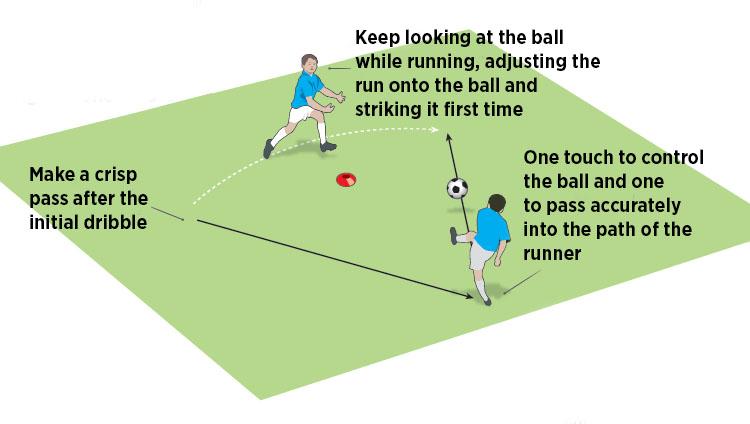
Passing, Vision, First Touch, Off The Ball and obviously Teamwork are all essential attributes for one-twos. Your midfielders need to possess these attributes in order to achieve effective one-two passing patterns.
So firstly, both players involved in one-twos require excellent First Touch, Vision, Technique and Passing attributes in order to control the ball well and make a short pass quickly and accurately.
Then the player must have enough mobility (Acceleration and Agility) to move quickly into another position on the pitch to receive the pass from his partner. Then pass again if needed.
In order to receive the pass, spatial awareness and attacking movement play a great role. Thus both players involved in one-twos must have strong mental attributes. Particularly Decisions, Anticipation and Off The Ball to spot the pass and decide on the best time to run into it.
The player involved in one-twos would also benefit from a good Work Rate and Stamina to repeat this pattern of the pass and move throughout the game.
When performed correctly by skilled players, one-twos create a beautiful pass and move combinations. Nothing is more satisfying than seeing your players pass, move and then receive the ball again only to pass forward again. As an additional benefit, it makes it very hard for opposition defenders to deal with such a progressive movement. Even the tightest defences can be unlocked easily through a series of well-executed short passes. Short passing is a good way to create space where there is not much space, to begin with.
But one-twos are not easy to achieve, and you need very good, technical players with a very well-rounded skill set. Players like Villarreal’s Manu Morlanes Aouar is one example. You can see his attributes in one of the screenshots I posted above.
The Targetman – The Tactical Battering Ram
But what about those times when short passing and technical creativity are just not enough? It’s 70 minutes into the match and you still cannot score that all-important goal. The underdog side has locked its defence in front of its goal. Despite your best attempts, your players just cannot break into this space. At such times, and being the superior team it’s bound to happen more often than not, you need to inject a bit of old-school football physicality into the mix. For this reason, I almost never play without a tall, strong Targetman-type player in my central striker slot. As soon as I find one for my team, and he becomes good for the role, I will designate him as my 1st choice striker. In FM22, and at Villarreal, my go-to choice is Fernando “Fer” Niño Rodríguez.
So far this season, he matched our left Inside Forward’s production practically goal for goal. Except he did even better by scoring 18 in 15 games. That’s not too shabby for a player who is essentially a tall, human battering ram with great finishing. Sometimes when all else fails you need a battering ram to break through a parked bus. The benefit of such a player is that they can go toe-to-toe against tall and strong opposition centrebacks. These centrebacks operate in a compressed space and can be hard to get by for smaller inside forwards. While a very strong Targeman striker can draw as many as two centrebacks just by his physical presence alone.
Players like Romelu Lukaku are goal-magnets. Due to his jumping ability and strength, Lukaku is seen by opposition as too much of a threat to leave unmarked near their goal. Especially with crosses coming in from the wingbacks. Playing a giant of a striker like Lukaku, or John Toshack if you are in the retro football hipster mood, can have huge benefits to your defence-breaking ability. Not only does a big Targetman free up space (just his physical presence) for your other more nimble and creative players but also can score a fair share of easy header goals from floated crosses.
Not to say that your battering ram of striker should be a one-trick pony only capable of scaring defenders and heading balls in. Far from it. As you can see from his attribute, my “Fer” Niño is a rather technical player with decent passing, above average first touch, technique, teamwork and vision. He might not be Villarreal’s flashiest player but is nevertheless one who is more than capable of predicting the play, controlling a difficult ball and passing it short to a teammate. Even if Total Football epitomizes intricate passing patterns and slow build-up, it does not exclude having a Targetman striker. The important role that Sebastien Haller played at Erik ten Hag’s Ajax is a great testament to this.
Total Football is not Tiki-Taka, but instead a tactical system that is completely focused on controlling the pitch. And what is not the best way to control opponent’s half of the pitch if not through a Targetman. I don’t think that the value of having a good Targetman can be underestimated. For any tactic that aims to progressively move the ball up the pitch and neutralize opposition defence. If anything by injecting a healthy dose of aggressive physicality, such a player will make your attacking transition harder to predict. And will make it less likely that your attack gets stifled by a Parked Bus.
On that note, I will end this before I start to ramble too much. Look forward to my future articles chronicling my Villarreal save in Football Manager 2022. Thank you for reading! If you enjoyed this write-up, then please follow us @ Dictate The Game’s Facebook, Dictate The Game’s Twitter

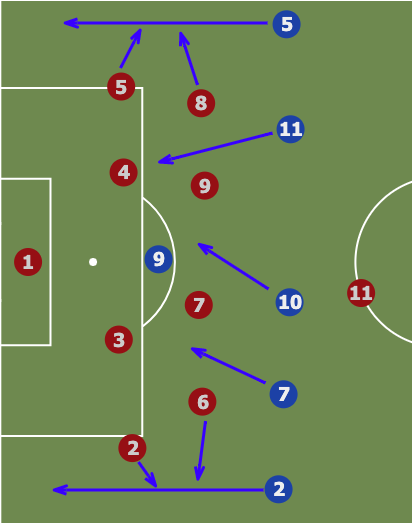

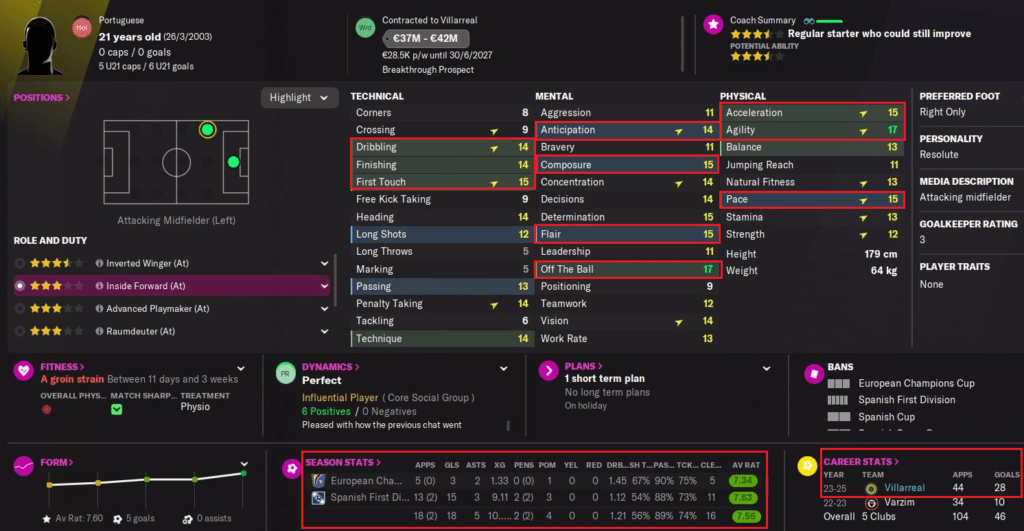

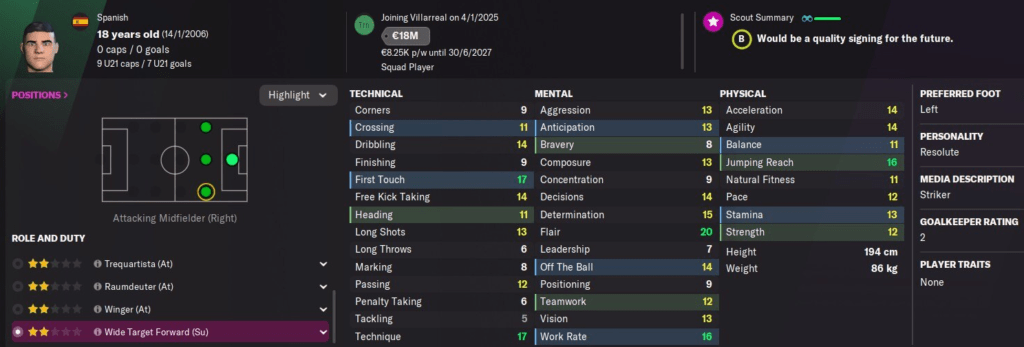
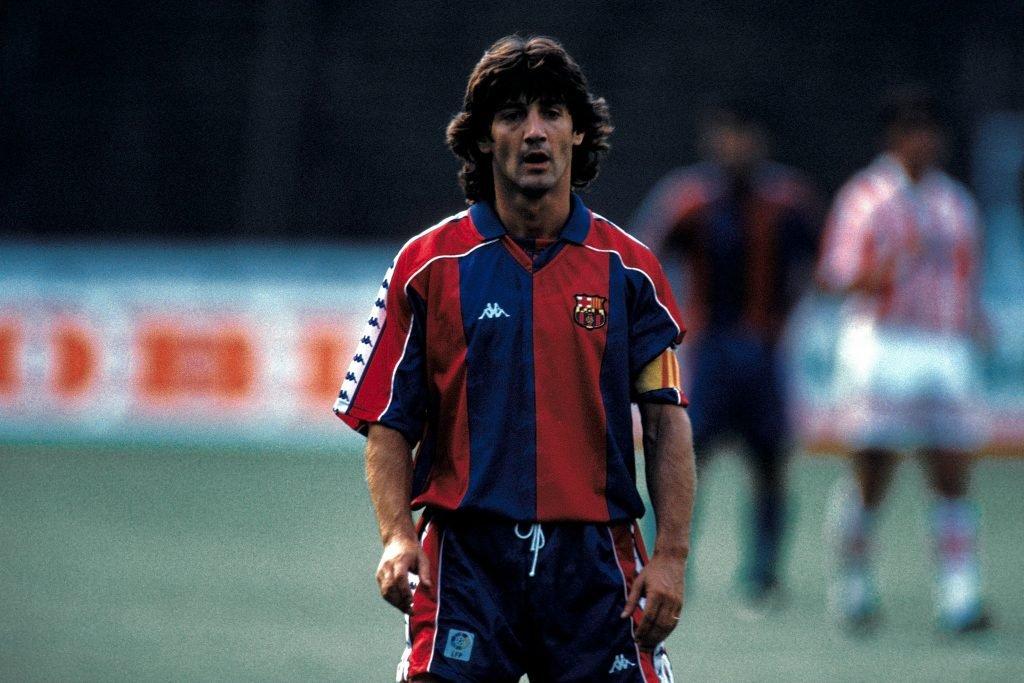
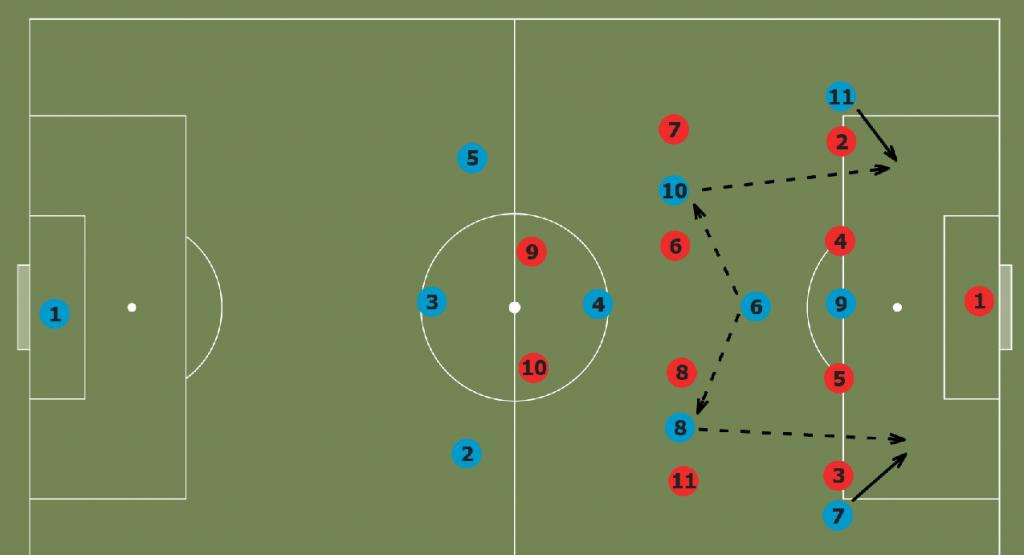

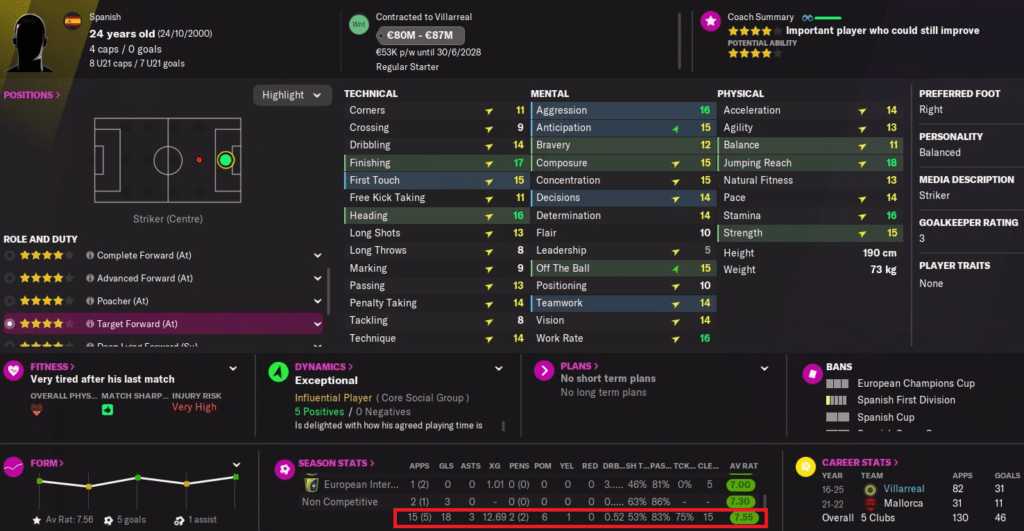
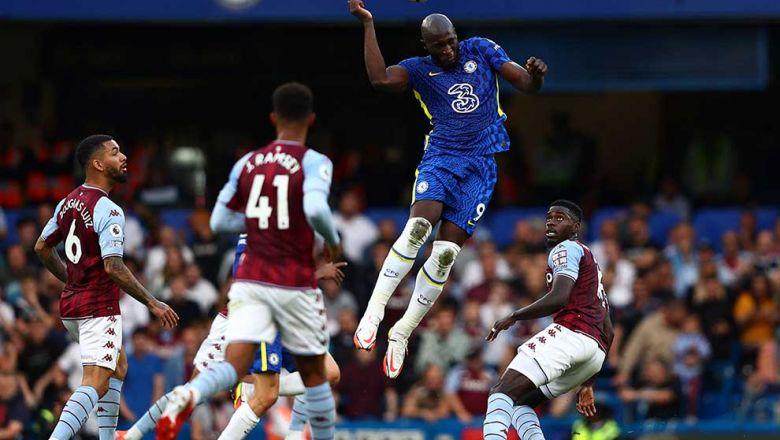
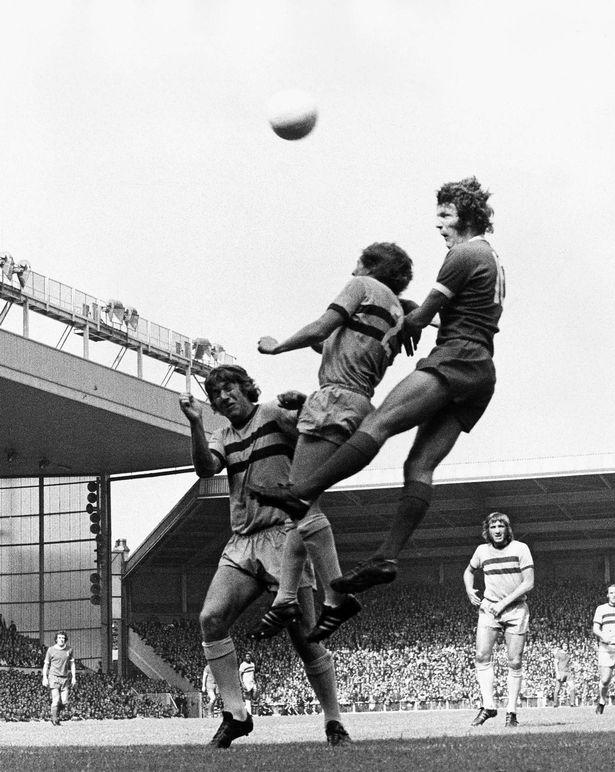
6 thoughts on “Total Football Journeyman: Breaking The Parked Bus in FM22”
Where is the download link buddy?
Haha sorry forgot to include one. But I will post a link to it on here just for you, mate. Probably late tonight Eastern Standard Time.
Thanks mate, I can’t wait to try it in my save 👍🏻
Here you go: https://ufile.io/bpiezh2t
🙂
Thanks buddy much appreciated 😜